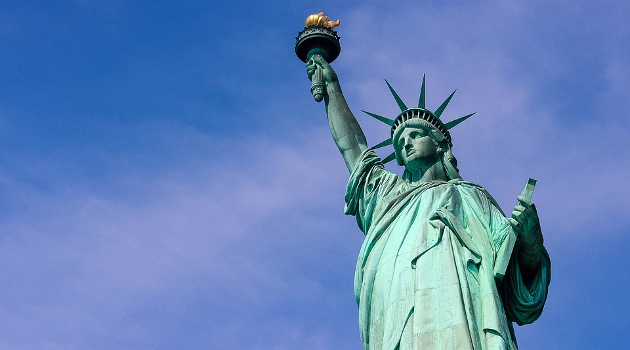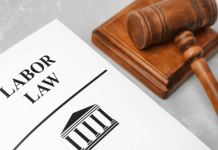This article is written by Aditya Singh from Symbiosis Law School, Noida. H-1B work visa by the United States The article further analyses the Impact on Indian workers, the visa applicants, and India’s stand on this proclamation.
Table of Contents
Introduction
Major Tech companies Google, IBM, Facebook, Accenture, and Amazon are amongst those appealing to the Trump government to continue the visa schemes which will enable them to recruit skilled and experienced immigrant workers because they would be essential for the revival of the American economy in the post-COVID environment. Taking into account the widespread unrest in America owing to the coronavirus pandemic, the United States government is contemplating suspending a variety of work visas like the H-1B. Indians are perhaps the major recipients of H-1B work visas, obtaining around 2/3 of the eighty-five thousand new visas granted annually.
Background
On 22nd June 2020, American President Donald Trump approved an Executive Order prohibiting fresh applications for a range of international workers visas till the end of 2020. It also incorporates the limited-term work visa H-1B, which hundreds of thousands of Indian nationals seek each year.
In the midst of the Covid-19 emergency, which has triggered a major increase in unemployment in the nation, President Trump issued an executive order referencing difficult situations for the US economic system. However, it also represents the anti-immigrant agenda that constituted a significant part of his 2016 presidential election campaign.
The directive further limits the privilege of US firms with international operations and multinational businesses with U.S. subsidiaries to shift overseas executives as well as other staff to the U.S. for months or even years-long stretch. It also includes husbands or wives of spouses who are working with businesses situated in the U.S. Authorities stated that the worker visa ban coupled with increasing limitations on issuing new green cards would force as many as 500,000 migrant workers out of the nation for the remaining period of the year. Most business groups remain strongly opposed to this, who fear that it would obstruct their ability to hire vitally essential employees from foreign countries for positions that Americans are either reluctant to do or are unable to do.
Government representatives have stated that the President’s directive will not impact individuals outside the U.S. that already have valid visas or seasonal agricultural employees, whose yearly figures usually vary from a minimum of around 50,000 to a peak of about 250,000 over the last fifteen years. Some medical staff working directly in research with respect to coronavirus would also have a limited exemption. Whereas greater focus has been directed towards the promise made by the President with respect to the creation of a “big, beautiful wall” to deter unauthorized border breaches, his attempts to slow the influx of legal immigrants have been much more successful and possibly long-lasting.
In the midst of the pandemic, the trump government has used the public health crisis as an excuse for issuing a series of policy reforms impacting nearly every part of the immigration framework, particularly asylum and green cards. While several reforms were revealed as being temporary, they could stay in effect indefinitely. However, critics claim that the government took advantage of the public health emergency and also the economic recession it has triggered, as an excuse for implementing measures that would help their immigration policies.
Whereas Mr Trump and his associates have said that the visa suspension was just a reaction to the disease outbreak, for several years the government has been trying to implement the very same significant cuts in legal immigration policies, even at periods when unemployment has been at its lowest in years. The President supported the RAISE Act in 2017, which was a Republican Senate bill that could have trimmed legal immigration, together with business visas, by approximately 50%.
The U.S. government has asserted that it intends to establish a system of immigration that gives priority to skilled immigrants with qualifications. The 2019 Novel Coronavirus (COVID-19) has substantially impacted the livelihood security of American people. The United States companies and their employees have been facing significant disturbances since March 2020 in pursuing several public health actions essential to flatten the COVID-19 curve and to prevent the transmission of SARS-CoV-2, the virus causing COVID-19. From February to May 2020 total unemployment rate in the USA almost quadrupled.
American citizens end up competing against foreign workers for employment opportunities in almost every sector of their economy, such as with millions of immigrants entering the USA, for temporary employment. Employees hired for a short period are often accompanied by their family members, with several of them even competing against American employees. Under regular conditions, effectively managed temporary worker services may bring economic benefits. However, in the exceptional situations of the economic downturn arising from the COVID-19 outbreak, several non-immigrant visa schemes approving such work present an unprecedented danger to the jobs of American citizens.
Impact on visa applicants
Firstly, The directive is not intended to stop the processing of visas for several thousands of temporary staff, which include a large majority of Indian nationals in the H-1B skilled worker group; agricultural labourers listed under the H-2A visa; and temporary workers falling in the H-2B group.
Secondly, as per the White House, the proposal is also expected to provide exemptions for certain groups of crucial employees, which include those providing in health care services and have a vital role to perform in the battle against the pandemic.
Thirdly, there are also provisions being made for those wanting to immigrate through their direct relatives. This incorporates family members of United States citizens’ who may apply for green cards or permanent residence. In addition, this Executive Order does not affect individuals that have already been awarded a permanent residency.
Fourthly, armed services members, those who have to immigrate for purposes of law enforcement and are already in the process, and others on the EB-5 plan, which mandates people to spend at least 500 thousand dollars in U.S. real estate ventures, will be taken into consideration.
Apart from these exceptions, there seems to be a wider issue about how many job vacancies that new immigrants may possibly take would be saved for American workers out of employment. Since the impact of the pandemic started to feed on the United States economy, more than 26 million people have filed for unemployment claims. Some experts estimate that about three hundred thousand out of the million green cards that the US grants yearly might potentially be affected by the suspension of immigration processing during the proclamation period. The distinction between both the figures is literally enormous, and it leads to questioning the underlying intent behind the executive order.
Impact on Indian workers
There seems to be a minimal concern when it comes to tourism currently, as the health risks because of the coronavirus outbreak have placed a halt on commercial flights in India. Several other airline companies internationally have also terminated further operations and decided to cancel all flights. In addition, in several nations, new arrivals are subject to quarantine protocols, which may discourage many tourists from foreign travels. Finally, In March 2020, the United States- State Department has declared the suspension of all standard processing of visas at its international consulates and embassies; which not only has reduced the visa issuance rate, but it has also significantly reduced legal immigration. But if compared, around 9.2 million visas were granted last year for overseas diplomatic missions on behalf of the U.S.
Once the worst stages of the pandemic will be over in the United States and India, air travel can again be resumed and foreign travelers will have the opportunity to fly to the U.S. once more. However currently, there seems to be no clarity of any kind as to when these conditions may develop.
As far as skilled workers pursuing the H-1B visas are concerned similar requirements are also applicable to them, as the issuance of U.S. visas has come to a halt for every country and not just India. It has put several H-1B visa applicants in a difficult position in India and can have an economically crippling effect on the IT and IT Enabled Service (ITeS) sectors. This, however, is a result mainly from the pandemic’s cumulative effect and not from the suspension on immigration put by the U.S. Government.
Affect on U.S. politics
Considering the negligible effect on net employment saved for U.S. citizens, there is a serious question as to whether the suspension was formulated as a serious policy initiative or whether it is a strategy to distract and cover the inability of the U.S. administration to save more livelihoods and to strengthen the diminishing political status of the President.
If the latter situation is applicable here, then the tone for the forthcoming US Presidential elections has already been established by this executive action, as immigration has been a controversial problem since 2016. In 2020, a trump-driven introduction to immigration concerns could further continue to divide American society and contribute to an increasingly bitter campaign season.
The primary explanation for his strategy seems to be the worsening U.S. economy, which, like many other economies across the globe, has plunged into a virtual stalemate in the midst of the disease outbreak. whereas another underlying explanation for this move could be that Mr. Trump seeks re-election against the then presumed Democratic nominee U.S. Vice-President Joe Biden, in the 2020 elections to be held in the month of November. Immigration restriction policies supported Mr. Trump’s campaign well throughout the 2016 Presidential campaign, especially when these were put in the perspective of securing employment for U.S. citizens.
India’s stand
Hopes of Indian IT majors with respect to developing their order books as they crawl back through a gradual recovery of the Indian economy in the aftermath are expected to be significantly weakened by this step. Moreover, this could emerge at a critical point of inflexion for the Indian economy, even as limitations on the migration of people and commodities are being lifted gradually after India crosses its peak figures of the disease outbreak, contributing to a knock-on impact ranging from IT to other industrial/business sectors.
IT service exports from India to the United States, which are heavily dependent on the H-1B visa, have become a significant component of bilateral economic exchange. Service imports by the U.S. from India were reported to be at $29.6 billion in 2018, which was 4.9 percent higher than in 2017, and around 134 percent higher than the levels reported in 2008, as per the U.S. trade authorities. The main exports of services from India to the US have been in the sectors dealing with telecommunications, software, information technology, research and development, and travel.
Till now, the U.S. has granted 85,000 H-1B visas each year, out of which about 20,000 went to the graduate students and 65,000 to applicants from the private sector, and about 70 percent would have been obtained by the Indian nationals. The Institute for Migration Policy has been referenced forecasting that up to 220,000 migrant workers will be barred as a consequence of Mr. Trump’s announcement.
The response of the Indian Government has thus far been quiet, confined to emphasizing on the significance of skilled and experienced Indian professionals in providing the economy of the United States with a competitive advantage. A lawsuit has also been filed by the Wasden Banias, which is an immigration firm, on behalf of 174 Indian Nationals, calling this order of the government to be ultra vires. A major reason for filing these suits was also the affected litigants who were out of the country pertaining to the travel ban imposed due to COVID-19. Thus, as a result of this proclamation, they would not be able to travel back to the United States, once the flights resume, if they do not have a visa stamp on their passport.
Conclusion
However, the reality is that the highly qualified non-immigrant visa prohibition is a double-edged blade can be sufficiently illustrated by the evidence that the unemployment levels in the super-sector of ‘Professional and Business Services,’ which encompasses IT services, reportedly fell during April and May 2020, and almost 950,000 work openings existed nationally in this sector given the steep rise in overall unemployment filings. Also, if there is at least one presumption of the Trump administration’s immigration policies that is most likely to fail, it is that there are a sufficient number of U.S. citizens with the required skill-set and qualifications to satisfy the job positions being vacated by the U.S. government.
References
- https://templatelab.com/presidential-proclamation/
- https://www.americanimmigrationcouncil.org/research/h1b-visa-program-fact-sheet
- https://www.forbes.com/sites/stuartanderson/2020/07/15/major-lawsuit-filed-to-save-families-from-trump-h-1b-visa-ban/#7881b5e0287f
LawSikho has created a telegram group for exchanging legal knowledge, referrals and various opportunities. You can click on this link and join:













